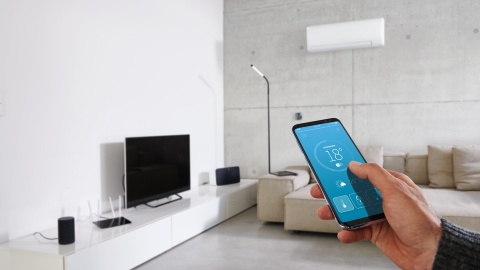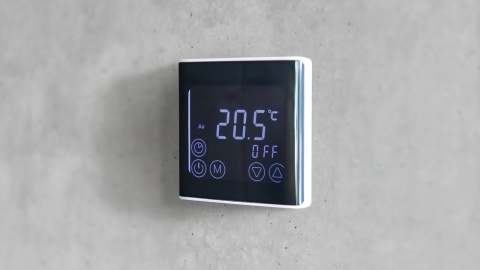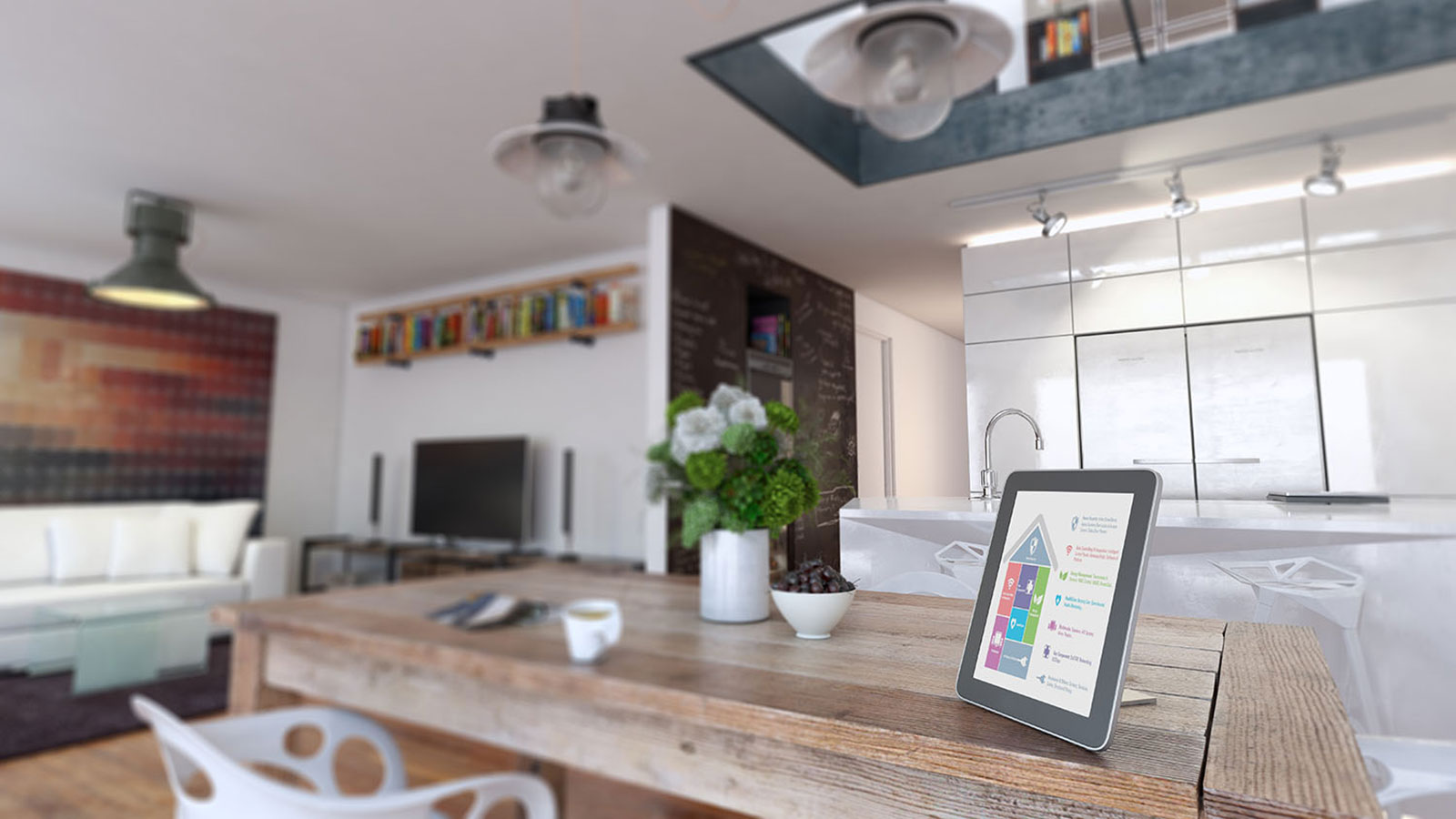
They are intelligent and will become a key part of the energy transition: smart buildings. But what are they exactly and what is their hallmark?
Definition: What is a smart building?
8:45 on a Monday morning: An employee of an international media company drives into the underground car park. He doesn’t need to look for a place to park because all the parking spaces are equipped with sensors. A look at the smartphone app shows where there are free spaces. While the employees parks, the building technology prepares his office, setting the heating, lighting and air conditioning to suit his preferences. All that’s possible because the building is smart – a connected building of the future.
Smart buildings support the energy transition
Yet smart buildings are not only highly convenient. They can also be a component in the energy transition. In the EU alone, buildings are responsible for 40 percent of energy consumption and 36 percent of CO2 emissions. However, the German government aims to reduce the energy required by existing buildings by 80 percent by 2050. That could be achieved if smart buildings generate their own electricity – such as with combined heat and power units and photovoltaic systems – and are also linked up with smart grids.

Smart buildings are also energy-efficient. Sensors in them can detect how many people are in a room and regulate the lighting and heating automatically on that basis. The maintenance overhead is also reduced: Sensors are fitted in building systems, such as elevators, and measure and monitor the status of components. If there is the impending risk of a defect through wear and tear, technicians are sent an e-mail. They service the elevator proactively – before it fails or expensive repairs are needed. Last but not least, smart buildings increase safety. If there’s a fire in the building, sensors detect the spread of smoke. A loud and decisive computer voice from the speakers tells people which escape route to take.

What’s the difference between a smart home and a smart building?

Connected refrigerators order milk, blinds are adjusted in line with the sun’s position, the heating transmits its meter reading automatically to the power utility: Digitalization of the home is in full swing. The objective is a smart home that enhances the quality of living and cuts running costs.
In contrast to a private home, the term “smart building” denotes intelligent networking and automation in non-residential buildings, such as offices, airports and shopping malls. The goal of that is the same as in smart homes: To increase convenience and reduce energy consumption. However, security requirements in smart buildings are more complex. An office building with thousands and hence significantly more connected sensors offers a far greater attack surface for cybercriminals. That means refined security solutions are needed.
What components turn a building into a smart building?
Three steps are necessary to make a building smart:
- The building must collect information from the surrounding area with the aid of sensors.
- A computer system must analyze the data and derive measures.
- Finally, actuators must implement the control commands – for example, open windows automatically or regulate the heating.
A digital twin is required to enable such intelligent automation. The building’s digital twin maps all the functions and processes in a computer model and allows them to be controlled. Our sensor technology portfolio named XENSIV™ is the backbone for that. The portfolio comprises:
- Pressure sensors
- Acoustic sensors
- 3D image sensors
- Radar sensors
- Magnetic sensors
Their use in conjunction with computer systems makes buildings smarter and more context-aware. They can “hear,” “see” and “understand” what is happening around them and adapt their operation to changed factors.

Examples of pioneering smart buildings in Europe: The Edge in Amsterdam and The Cube in Berlin
One of the pioneering smart buildings is The Edge in Amsterdam – a 40,000 m2 office building with a completely-glazed facade that is bathed in light. Around 28,000 sensors are fitted in the building. They measure parameters such as humidity, brightness and temperature and can adjust them accordingly. Stuffy air and rooms that are too hot or cold are thus a thing of the past. Employees are always provided with ideal conditions at their workplace. Thanks to smart building technology, The Edge also manages to consume 70 percent less electricity than conventional office buildings.
And speaking about the workplace: Instead of employees being assigned set desks, the building boasts open-plan landscapes where staff can find a place to work – and can use a smartphone app to find a free spot. This app also lets them control the lighting to suit their preferences. More than 6,000 lights are integrated in an IP-based LED system, also termed Power over Ethernet.
The Cube – a smart office building in Berlin
The Cube, an office building in the direct vicinity of Berlin Central Station, works in a similar way. The Cube is a ten-story building with a glass facade that is folded inward and is likewise equipped with thousands of sensors and actuators. Its heart is its control center called the “Brain.” It is artificial intelligence that analyzes data from the sensors and makes suggestions to the operator on how the building can be run more efficiently. If the Brain detects that there are no longer any employees in a part of the building after 4 p.m., it suggests switching off the lighting and air-conditioning there so as to save energy.

What are the risks of smart buildings?
However, smart buildings not only deliver advantages, but also harbor risks, such as from cyberattacks. Since thousands of devices are connected to the Internet, there are many new “attack vectors,” as they are termed. They can be exploited by attackers to penetrate the building’s IT system, after which it’s simple to manipulate data and block functions of the building. That’s why Infineon focuses strongly on security when developing hardware for smart buildings. Its hardware-based security solutions range from simple authentication chips to complex implementations.

Smart buildings: What does the future hold?
The market for smart buildings is growing at a rapid pace. According to the market research firm iot-analytics, 23.8 billion networked devices are in use worldwide 2021, an increase of 10 percent over 2020 (21.6 billion devices).
Experts expect the largest growth to be in the field of building automation. 230 million devices were connected worldwide in buildings in 2018 and that figure will be 483 million in 2022. Their common objective: To make working and living more convenient and counteract climate change by increasing energy efficiency.
Last update: July 2021



